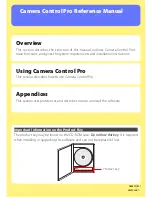
• Edit the
/etc/postfix/main.cf
file with a text editor, such as
vi
.
• Uncomment the
mydomain
line by removing the hash mark (
#
), and replace
domain.tld
with
the domain the mail server is servicing, such as
example.com
.
• Uncomment the
myorigin = $mydomain
line.
• Uncomment the
myhostname
line, and replace
host.domain.tld
with the hostname for the
machine.
• Uncomment the
mydestination = $myhostname, localhost.$mydomain
line.
• Uncomment the
mynetworks
line, and replace
168.100.189.0/28
with a valid network setting
for hosts that can connect to the server.
• Uncomment the
inet_interfaces = all
line.
• Restart the
postfix
service.
Once these steps are complete, the host accepts outside emails for delivery.
Postfix has a large assortment of configuration options. One of the best ways to learn how to
configure Postfix is to read the comments within
/etc/postfix/main.cf
. Additional resources
including information about LDAP and SpamAssassin integration are available online at
http://www.postfix.org/
.
3.3. Fetchmail
Fetchmail is an MTA which retrieves email from remote servers and delivers it to the local MTA.
Many users appreciate the ability to separate the process of downloading their messages
located on a remote server from the process of reading and organizing their email in an MUA.
Designed with the needs of dial-up users in mind, Fetchmail connects and quickly downloads all
of the email messages to the mail spool file using any number of protocols, including POP3 and
IMAP. It can even forward email messages to an SMTP server, if necessary.
Fetchmail is configured for each user through the use of a
.fetchmailrc
file in the user's home
directory.
Using preferences in the
.fetchmailrc
file, Fetchmail checks for email on a remote server and
downloads it. It then delivers it to port 25 on the local machine, using the local MTA to place the
email in the correct user's spool file. If Procmail is available, it is launched to filter the email and
place it in a mailbox so that it can be read by an MUA.
3.3.1. Fetchmail Configuration Options
Although it is possible to pass all necessary options on the command line to check for email on
a remote server when executing Fetchmail, using a
.fetchmailrc
file is much easier. Place
any desired configuration options in the
.fetchmailrc
file for those options to be used each
time the
fetchmail
command is issued. It is possible to override these at the time Fetchmail is
run by specifying that option on the command line.
Chapter 11. Email
196
Summary of Contents for ENTERPRISE LINUX 4.5.0 -
Page 1: ...Red Hat Enterprise Linux 4 5 0 4 5 0 Reference Guide ISBN N A Publication date ...
Page 2: ...Red Hat Enterprise Linux 4 5 0 ...
Page 4: ...Red Hat Enterprise Linux 4 5 0 ...
Page 24: ...xxiv ...
Page 26: ......
Page 36: ...12 ...
Page 72: ...48 ...
Page 112: ...88 ...
Page 122: ...98 ...
Page 140: ...116 ...
Page 142: ......
Page 300: ...276 ...
Page 318: ...294 ...
Page 320: ......
Page 332: ...308 ...
Page 350: ...326 ...
Page 378: ...354 ...
Page 388: ...364 ...
Page 394: ...370 ...
Page 395: ...Part IV Appendixes ...
Page 396: ......
















































